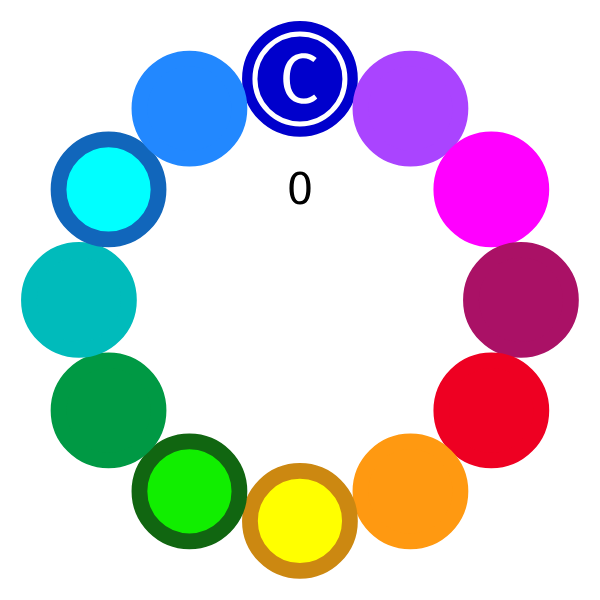Pitch Class
Glossary
Set Theory
A pitch class is the collection of all notes with the same name (or enharmonic equivalent in 12-TET) ignoring octave, and ignoring repeats of that note. There are twelve pitch classes, conventionally named with numbers starting from zero.
- C
- C or D♭
- D
- D or E♭
- E
- F
- F or G♭
- G
- G or A♭
- A
- (or t for ten). A or B♭
- (or e for eleven). B

A pitch class set consists of one or more of these numbers (usually digits), so C E G would be represented by 047. But more importantly, C E G C would also be represented by 047 since the two C notes are treated as one pitch class (0 in this case).
Set classes collapse up to twelve transpositions of a pitch class set (written in its lowest numerical form or prime form) into a single object (clock diagram) which reflects the interval relationships but not the specific pitch classes.
Set Theory
A pitch class is the collection of all notes with the same name (or enharmonic equivalent in 12-TET) ignoring octave, and ignoring repeats of that note. There are twelve pitch classes, conventionally named with numbers starting from zero.
- C
- C or D♭
- D
- D or E♭
- E
- F
- F or G♭
- G
- G or A♭
- A
- (or t for ten). A or B♭
- (or e for eleven). B

A pitch class set consists of one or more of these numbers (usually digits), so C E G would be represented by 047. But more importantly, C E G C would also be represented by 047 since the two C notes are treated as one pitch class (0 in this case).
Set classes collapse up to twelve transpositions of a pitch class set (written in its lowest numerical form or prime form) into a single object (clock diagram) which reflects the interval relationships but not the specific pitch classes.